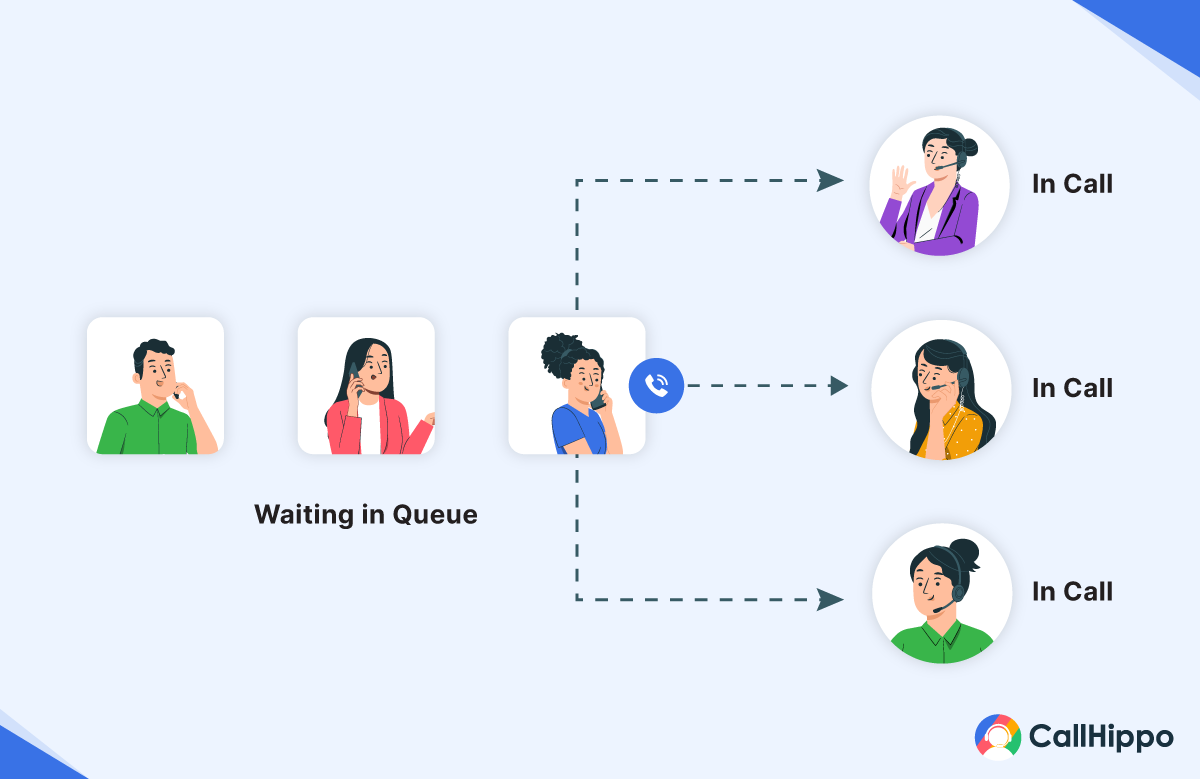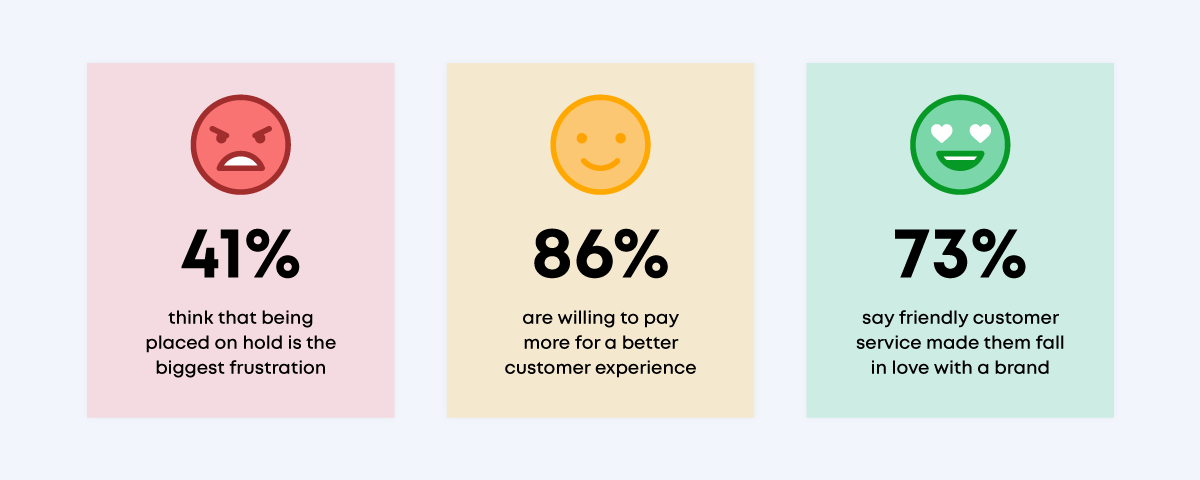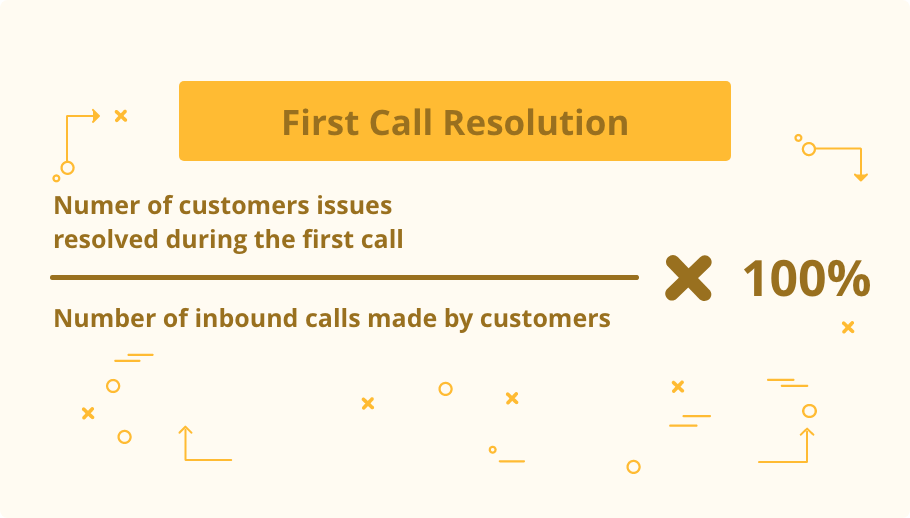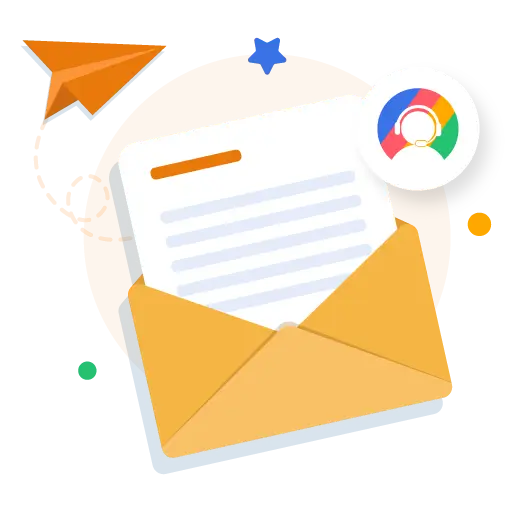Long wait times are a major pain point for customers, with 60% of consumers stating that even a minute on hold feels too long. The queue callback feature solves this by allowing customers to request a callback option instead of waiting in line.
This improves customer satisfaction, reduces call abandonment, and boosts efficiency. But how does queue callback work, and how can your call center implement it effectively?
In this detailed blog, we’ll explore its benefits, setup, best practices, and impact on key call center metrics.
What is Queue Callback?
Queue callback is a contact center feature that offers customers the option to receive a callback instead of waiting in a call queue. When all agents are busy, the system places the caller in a call-back queue and calls them back when an agent is available. This eliminates the need for long wait times, enhances the customer experience, and optimizes outbound call management.
This callback feature is especially useful for businesses that experience high call volumes, ensuring that customers don’t have to stay on hold while still keeping their place in the queue.
How Does the Queue Callback Feature Work?
The queue callback option operates through a simple but effective process:

Step 1: Customer Initiates a Call
The customer calls the contact center’s support number, and if all agents are busy, the IVR informs them of the callback option.
Step 2: A Callback Request is Placed in the Queue
If the customer opts for a callback, their details are recorded, and their request is placed in the callback queue. The customer can also opt to either request an immediate callback or schedule it for later.
Step 3: Callback Execution
When an agent becomes available, the system automatically initiates an outbound call to the customer, connecting them without the need for the caller to dial again.
Step 4: Call Completion & Resolution
The agent assists the customer and resolves the issue. If the customer doesn’t answer, the system attempts another call or moves on to the next request, ensuring an efficient experience for both parties.
This automated queue callback feature ensures an efficient, stress-free experience for both customers and agents.
Top 5 Benefits of Queue Callback
Implementing a queue callback feature can significantly improve call center efficiency and customer satisfaction. It reduces hold times, optimizes agent workload, and enhances the overall customer experience while lowering operational costs.
Here are some of the benefits in detail:
1. Reduces Call Abandonment Rate
High call abandonment rates result from long hold times, frustrating customers and causing them to disconnect. A call queuing system with a callback request eliminates this issue by giving customers the freedom to hang up and receive a return call when an agent is available.
This reduces dropped calls, enhances customer retention, and ensures that call centers don’t lose potential leads or service opportunities.
2. Improves Customer Satisfaction

Being placed on hold frustrates customers, leading to dissatisfaction and potential brand disloyalty. A callback feature eliminates this issue by providing a smooth and hassle-free experience.
By reducing wait times and giving customers the flexibility to receive a call at their convenience, call centers can enhance overall customer satisfaction, improve Net Promoter Scores (NPS), and increase customer retention rates.
3. Optimizes Agent Productivity
Unpredictable call volumes can overwhelm agents, leading to stress and inefficiency. The queue callback feature streamlines workflows by evenly distributing calls based on agent availability. This structured approach prevents agents from being overloaded, allows them to prepare for each conversation, and improves overall productivity.
As a result, call centers experience lower agent burnout and better service quality.
4. Lowers Operational Costs
Each minute a call remains in a queue adds to telecom expenses, increasing operational costs for businesses. Implementing a callback option minimizes the duration of active calls, thereby reducing expenses related to long hold times.
Additionally, it helps optimize resource allocation by ensuring agents are only engaged in active, meaningful conversations rather than managing hold queues.
5. Increases First Call Resolution (FCR) Rate
Long hold times frustrate customers, making them less cooperative and engaged when they finally connect with an agent. With a callback option, customers receive assistance at a more convenient time, allowing them to focus on resolving their queries.
This results in more productive conversations, fewer follow-up calls, and an improved First Call Resolution (FCR) rate, ultimately enhancing service efficiency.
Top 4 Drawbacks of Using the Queue Callback Feature
While the queue callback feature offers many advantages, it also comes with some challenges. Call centers must be aware of these potential downsides to implement them effectively and ensure a seamless customer experience.
Let’s take a closer look at the downsides:
1. Callback Scheduling Conflicts
A major challenge with the callback request system is that customers may not always be available when the callback is initiated. This can lead to missed connections, forcing agents to retry multiple times.
As a result, it may reduce efficiency and lead to customer frustration.
2. Requires Advanced Call Center Software
Implementing the queue callback feature requires call centers to invest in advanced telephony solutions. Not all legacy systems support this function, making it necessary to upgrade to modern software.
This can lead to higher operational costs and technical complexities, especially for small businesses with limited budgets.
3. Delays in High-Traffic Periods
During peak hours, a callback queue can still become overwhelmed, leading to delays in reaching customers. While the feature eliminates on-hold frustration, it does not always guarantee immediate assistance.
If call volumes exceed agent availability, customers may still face long wait times before receiving a callback.
4. Potential for Poor Call Quality
If the callback option is not properly managed, it can result in rushed conversations or unresolved issues. Agents may feel pressured to clear the queue quickly, leading to ineffective customer interactions.
Without a structured approach, callbacks may fail to provide the high-quality service customers expect.
Implementing a queue callback feature can significantly reduce call abandonment rates and improve customer satisfaction. By offering customers the option to receive a callback instead of waiting on hold, businesses can enhance the customer experience while optimizing call center efficiency.
4 Best Practices Of Queue Callback
Implementing the queue callback feature effectively can enhance customer experience and optimize call center performance. Follow these best practices to ensure smooth operations and improved efficiency.
1. Offer a Scheduled Callback Option
Providing a scheduled callback option allows customers to choose a convenient time for their callback request, ensuring they are available to take the call.
This reduces missed customer calls and improves the efficiency of customer service agents by minimizing repeated contact attempts. It also helps in managing a separate queue for scheduled callbacks.
2. Use AI-Powered Call Routing
Leveraging AI-driven technology ensures that call center agents handle callback queue requests efficiently. AI-based call routing prioritizes high-value customers and connects them with the most suitable customer service agent.
This improves resolution rates and enhances the overall customer experience by reducing wait times and optimizing service quality.
3. Provide Real-Time Callback Status Updates
Keeping customers informed about their callback options prevents frustration and uncertainty. SMS or voice notifications are used to update customers on their callback queue status.
Real-time updates reassure customers that their customer calls are being processed, enhancing their trust and satisfaction with your call center services.
4. Optimize Workforce Management
Proper workforce planning ensures that enough call center agents are available to handle callback request volumes, especially during peak hours.
Managing a separate queue for callbacks and real-time customer interactions helps balance workloads, reducing stress on agents and improving response times for all customer calls.
Queue Callback vs. Traditional Hold
Here is a tabular representation of how a queue callback differs from a traditional hold.
| Feature | Queue Callback | Traditional Hold |
|---|---|---|
| Customer Wait Time | Eliminated | Extended |
| Call Abandonment Rate | Reduced | High |
| Agent Productivity | Higher | Lower |
| Customer Satisfaction | Increased | Decreased |
What Metrics Does the Queue Callback Have a Positive Impact On?
Implementing a queue callback feature can improve several key performance indicators (KPIs) in a call center:
1. Call Abandonment Rate (CAR)
CAR = ( Total incoming calls/Total abandoned calls )×100
A lower CAR indicates better customer retention. The queue callback feature helps reduce call abandonment by offering customers the option to leave the queue and receive a callback.
This eliminates the frustration of waiting on hold, leading to fewer customers disconnecting and ultimately reducing the abandonment rate.
2. First Call Resolution (FCR) Rate

FCR = (Total calls handled / Issues resolved on first call)×100
By providing a callback feature, customers are not forced to re-explain their issue after waiting on hold for an extended period. This reduces the chances of miscommunication or customers needing to call back, resulting in a higher FCR rate.
With more efficient callbacks, agents can focus on resolving issues during the first contact, which directly enhances customer satisfaction.
3. Average Hold Time (AHT)
AHT = (Total calls received / Total hold duration)?
The queue callback system effectively reduces AHT by eliminating the need for customers to stay on hold. Instead, they are called back at a convenient time, significantly reducing the total hold duration and improving the overall customer experience.
With shorter hold times, customers feel less frustration, leading to a smoother interaction.
4. Customer Satisfaction Score (CSAT)
CSAT=(Total responsesSatisfied responses?)×100
The callback feature enhances CSAT by providing customers with a more convenient and personalized experience. Instead of waiting on hold, customers can expect a callback at their convenience.
This faster and more seamless response leads to increased satisfaction and a higher likelihood of positive feedback, improving the overall CSAT score.
Final Thoughts
Implementing a queue callback feature is a game-changer for call centers, improving customer experience, reducing call abandonment, and optimizing agent efficiency. By following best practices and monitoring key metrics, businesses can ensure a seamless and efficient callback option for their customers.
FAQs
1. What is a queue in a call center?
A queue in a call center is a virtual line where incoming calls are placed when all agents are busy. Callers wait in the queue until an agent is available or opt for a callback request.
2. What’s the Difference Between a Call Queue and a Call (or Ring) Group?
A call queue places calls in a line and distributes them sequentially to agents. A ring group, on the other hand, rings multiple agents simultaneously until one answers.
3. How does automatic callback work?
Automatic queue callback works by allowing customers to request a return call when no agents are available. The system calls them back when an agent is free, reducing the need for long hold times.

Subscribe to our newsletter & never miss our latest news and promotions.









